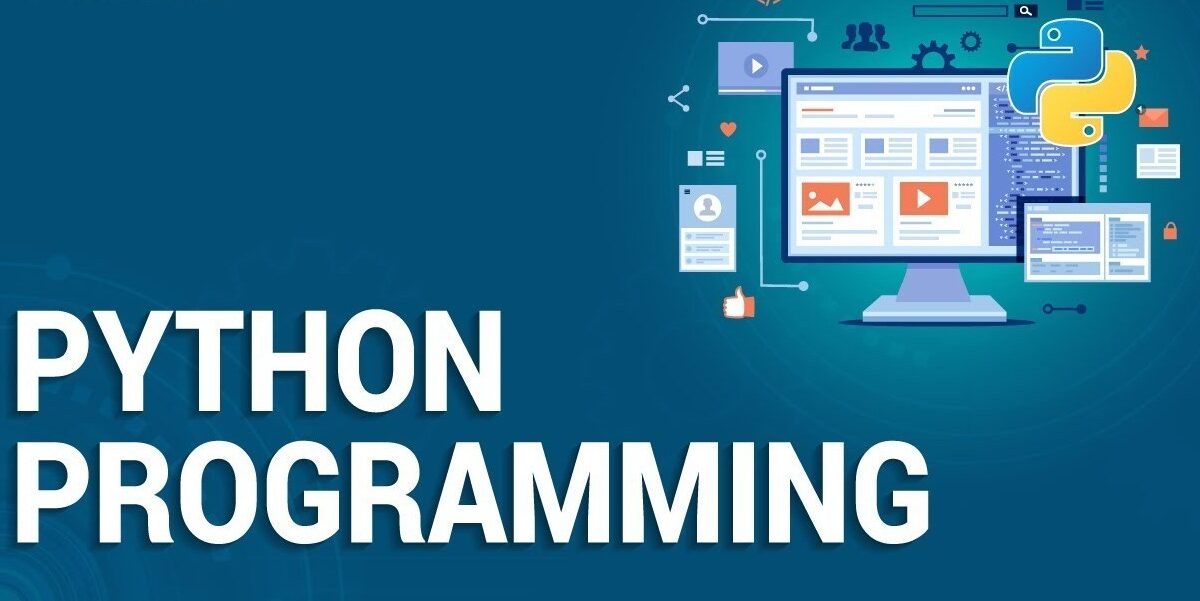Python Online Training
One of the top Python Online Training institutes in Bangalore with highly skilled trainers
- 4.7




- 105 Google reviews
|
Class Availability
Weekdays & Weekends
|
Course Duration
40-45 Hours
|
Training Methodology
25% Theory & 75% Practical
|
Class Availability
Weekdays & Weekends
Course Duration
40-45 Hours
Training Methodology
25% Theory & 75% Practical
4970
Profesionals Trained
350
Workshops Every Month
50
Countries And Counting
100
Corporate Served Successfully

Best Python Online Training in Bangalore
Best Python Online Training in Bangalore
IQ Stream Technologies is one of the top Python Training institutes in Bangalore BTM area with highly experienced and skilled trainers. IQ Stream Technologies Bangalore also offers placement assistance for students who enrolled in Advanced Python Training Courses. Python training course objectives are Identify/characterize/define a problem. Design a python program to solve the problem, Create executable code in Python, and much more. We also offers advanced tools for better learning, understanding and experience. IQ Stream Technologies also offering Python online training for Bangalore, Delhi, Mumbai, and Chennai students.
Expert Python Training Institute
Expert Python Training Institute
Become an Expert in Python with IQ Stream Technologies’ advanced problem solving Python learning programmes. Main highlights of our Python Training in Bangalore (BTM Layout), Delhi, Mumbai, and Chennai are Intensive Practical Training, Advanced Learning Materials & Tools, Friendly Classrooms, World class online infrastructure, hands-on labs, real-world tasks etc. IQ Stream Technologies offer beginner, intermediate and advanced Python lessons for you to become an expert in the area. We will also help you out on understanding the real life approach on Python, Data Science and Machine learning, Preparation of Resume, Mock Interviews and whatever the help you need to leverage your current experience and learning from training to get on to your next move in your career.
Course Overview
| Course Name | Python Online Training |
| Venue | IQ Stream Technologies |
| Official URL | Python Online Training |
| Demo Classes | On Demand |
| Training Methodology: | 25% Theory & 75% Practical |
| Course Duration | 40-45 Hours |
| Class Availability | Weekdays & Weekends |
| Demo Training | Email ID : info@iqstreamtech.com |
Syllabus
Introduction
Introduction
- History
- Features
- Setting up path
- Working with Python
- Basic Syntax
- Variable and Data Types
- Operator
Conditional Statements
Conditional Statements
- If
- If- else
- Nested if-else
Looping
Looping
- For
- While
- Nested loops
Control Statements
Control Statements
- Break
- Continue
- Pass
String Manipulation
String Manipulation
- Accessing Strings
- Basic Operations
- String slices
- Function and Methods
Lists
Lists
- Introduction
- Accessing list
- Operations
- Working with lists
- Function and Methods
Tuple
Tuple
- Introduction
- Accessing tuples
- Operation
- Working
- Functions and Methods
Dictionaries
Dictionaries
- Introduction
- Accessing values in dictionaries
- Working with dictionaries
- Properties
- Functions
Functions
Functions
Defining a function
Calling a function
Types of functions
Function Arguments
Anonymous functions
Global and local variables
Modules
Modules
- Importing module
- Math module
- Random module
- Packages
- Composition
Input-Output
Input-Output
- Printing on screen
- Reading data from keyboard
- Opening and closing file
- Reading and writing files
- Functions
Exception Handling
Exception Handling
- Exception
- Exception Handling
- Except clause
- Try ? finally clause
- User Defined Exceptions
Advanced Python
Advanced Python
OOPS
OOPS
Attributes Inheritance Overloading Overriding Data hiding
Attributes Inheritance Overloading Overriding Data hiding
Regular expressions
Regular expressions
- Match function
- Search function
- Matching VS Searching
- Modifiers
- Patterns
CGI
CGI
- Introduction
- Architecture
- CGI environment variable
- GET and POST methods
- Cookies
- File upload
Database
Database
- Introduction
- Connections
- Executing queries
- Transactions
- Handling error
Networking
Networking
- Socket
- Socket Module
- Methods
- Client and server
- Internet module
CGI
CGI
- Introduction
- Architecture
- CGI environment variable
- GET and POST methods
- Cookies
- File upload
GUI Programming
GUI Programming
- Introduction
- Tkinter programming
- Tkinter widgets
Some useful info on Python
Some useful info on Python
Difference between Python2 and Python3:
Difference between Python2 and Python3:
Python3 was released in year 2008. Python3 stopped supporting some of the syntax of its predecssor Python2.7. Python2.7 is supposed to be retired and it’s no longer be used.
There are several differences between Python2.7 and Python3.0. Here are a few major differences:
1. Python3.0 has different division from Python2.7: In Python2, 5/2 will result 2, where as 5.0/2.0 results 2.5
That means, if you are not using decimals in any of the two numbers, the result will not truncate the value after decimal point.
In Python3.0, 5/2 will result 2.5, which is as expected.
This way, Python3 is more intuitive. That’s one reason why it has become more popular over Python2
2. Difference in ‘print’ statement: Python2, it was a print statement whereas it’s replaced by print() function in Python3.
Python2: print “hello”
Python3: print(“hello”)
3. Strings ASCII vs UNICODE: In Python2, Strings are stored as ASCII, you have to add a “u” if you want to store strings as Unicode in Python 2.x.
In Python3, String are stored as Unicode by default
This is important because Unicode is more versatile than ASCII. Unicode strings can store foreign language letters, Roman letters and numerals, symbols, emojis, etc., offering you more choices.
How to convert Python2.x code to Python3.x
2to3 is a Python program, that can read the 2.x source and convert to 3.x code. The is program is located under Tools/scripts folder.
Some Useful Concepts and Programs in Python
Some Useful Concepts and Programs in Python
Print even numbers within a given number (include the given number)
Program:
limit = 20;
print (“Even Numbers within: “, limit);
for n in list(range(1, limit+1)):
if (n%2==0):
print(n, end =” “)
print() print (“End of the program”)
Output:
Even Numbers within: 20
2 4 6 8 10 12 14 16 18 20
End of the program
List in Python: some common usage
Program:
l = [0,1,2,3,4,5,6,7,8,9]
print (“Length of the list: “, len(l))
l1 = l[:3]
print (“Sub list below index 3: “, l1)
l2 = l[3:]
print (“Sub list from index 3 (includes): “, l2)
l3 = l[:-2]
print (“List excluding last 2 elements from the list: “, l3)
l3a = l[-2:]
print (“Last 2 elements from the list: “, l3a)
l4=[10, 11]
l.extend(l4);
print (“Concatenate two lists: “, l)
l.append(12);
print (“Append one element to the list: “, l)
l6 = [89,45,9,23,89,5,890,3,60,45,9]
print(“Original list, before sort: “,l6);
l6.sort();
print(“Sorted list ascending: “,l6);
l6.sort(reverse=True)
print(“Sorted list descending: “,l6)
# list of lists
list1 = [‘first’, ‘second’]
list2 = [‘third’, ‘fourth’]
list1Andlist2 = [list1, list2]
print (‘list1: ‘, list1)
print (‘list2: ‘, list2)
print (‘lis of lists: ‘, list1Andlist2)
# Access a specific element in the list
print (‘index 1 is second element: ‘, list1[1])
print (‘index 0 is first element: ‘, list1[0])
Output:
Length of the list: 10
Sub list below index 3: [0, 1, 2]
Sub list from index 3 (includes): [3, 4, 5, 6, 7, 8, 9]
List excluding last 2 elements from the list: [0, 1, 2, 3, 4, 5, 6, 7]
Last 2 elements from the list: [8, 9]
Concatenate two lists: [0, 1, 2, 3, 4, 5, 6, 7, 8, 9, 10, 11]
Append one element to the list: [0, 1, 2, 3, 4, 5, 6, 7, 8, 9, 10, 11, 12]
Original list, before sort: [89, 45, 9, 23, 89, 5, 890, 3, 60, 45, 9]
Sorted list ascending: [3, 5, 9, 9, 23, 45, 45, 60, 89, 89, 890]
Sorted list descending: [890, 89, 89, 60, 45, 45, 23, 9, 9, 5, 3]
list1: [‘first’, ‘second’]
list2: [‘third’, ‘fourth’]
lis of lists: [[‘first’, ‘second’], [‘third’, ‘fourth’]]
index 1 is second element: second
index 0 is first element: first
Tuple in Python: some examples
Program:
# Tuple. They are similar to Lists and immutable. Just use () instead of []. Use tuple when you have fixed lists
weekdays = (‘Monday’, ‘Tuesday’, ‘Wednesday’, ‘Thursday’, ‘Friday’, ‘Saturday’, ‘Sunday’)
print (‘Week days: ‘, weekdays);
print (“Week’s first day: “, weekdays[0])
print (“Week’s last day: “, weekdays[len(weekdays)-1])
Output:
Week days: (‘Monday’, ‘Tuesday’, ‘Wednesday’, ‘Thursday’, ‘Friday’, ‘Saturday’, ‘Sunday’)
Week’s first day: Monday
Week’s last day: Sunday
Dictionary in Python: some examples
Program:
#Dictionary is similar to Map in Java
examSchedule = {}
examSchedule[‘Mon’] = ‘English’
examSchedule[‘Tue’] = ‘Maths’
examSchedule[‘Wed’] = ‘Science’
examSchedule[‘Thu’] = ‘Social’
examSchedule[‘Fri’] = ‘French’
print (“Monday:”, examSchedule[‘Mon’])
print (“Monday:”, examSchedule.get(‘Mon’))
print()
#Loop through a dictionary
for key in examSchedule:
print(key, ‘:’, examSchedule[key])
print();
#Check if a key exists
if “Tue” in examSchedule:
print(“‘Tue’ exists in examSchedule and the value is: “, examSchedule[‘Tue’])
else:
print(“‘Tue’ not exists in the examSchedule”)
print()
#Remove an item in Dictionary
examSchedule.pop(“Tue”);
print(“‘Tue’ is popped”);
if “Tue” in examSchedule:
print(“‘Tue’ exists in examSchedule and the value is: “, examSchedule[‘Tue’])
else:
print(“‘Tue’ not exists in the examSchedule”)
print()
# Clear emptys the dictionary
examSchedule.clear()
print(“Dictionary after clear: “, examSchedule)
Output:
Monday: English
Monday: English
Fri : French
Mon : English
Wed : Science
Tue : Maths
Thu : Social
‘Tue’ exists in examSchedule and the value is: Maths
‘Tue’ is popped
‘Tue’ not exists in the examSchedule
Dictionary after clear: {}
Functions in Python: Example1
Program:
def add(a, b):
return a + b
x=10
y=20
print (“Sum of”, x, “and”, y, “is:”, add(x, y))
# Using function as Param
def callAdd(addFunc, x, y):
return addFunc(x,y)
s = callAdd(add, 20, 30)
print (“Sum of 20 and 30 is:”, s)
Output:
Sum of 10 and 20 is: 30
Sum of 20 and 30 is: 50
Function as Param in Python: Example2
Program:
# return Junior or Senior based on the experience only two conditions
def empType(experience):
if (experience < 8):
return ‘Junior’
else:
return ‘Senior’
# return Junior or Senior or Executive based on the experience three conditions
def empType1(experience):
if (experience < 8):
return ‘Junior’
elif (experience < 15):
return ‘Senior’
else:
return ‘Executive’
#Using function as parameter for another function
# Bonus based on the emp type
def empBonus(empTypeFunc, exp):
eType = empTypeFunc(exp)
if (eType == ‘Junior’):
return 20
elif (eType == ‘Senior’) :
return 10
else:
return 5
#Calling empType, will treat 16 years as Senior and hence Bonus as 10
print (“Case1, Bonus for 16 years of Emp: “, empBonus(empType, 16))
#Calling empType, will treat 16 years as Executive and hence Bonus as 5
print (“Case2, Bonus for 16 years of Emp: “, empBonus(empType1, 16))
Output:
Case1, Bonus for 16 years of Emp: 10
Case2, Bonus for 16 years of Emp: 5
Numpy and Pandas Library in Python
Numpy and Pandas Library in Python
Numpy means Numerical Python. This library consists of multi-dimensional array objects and collections of routines to handle them.This is specifically useful for developing algorithms. It is also widely used in the areas of shape manipultation and linear algebra.
Pandas library provides tools for data structures and data analysis. This library widely used in the field of data science and mahine learning.
Program1: One dimensional and two dimensional data using Numpy
import numpy as np
marks = np.array([80, 90, 95, 75])
sub = np.array([‘English’, ‘Maths’, ‘Science’, ‘French’])
sub_and_marks = np.array([sub, marks])
print(“Marks array:”, marks)
print(“Subjects array:”,sub)
print(“Subjects and Marks:”,sub_and_marks)
Output:
Marks array: [80 90 95 75]
Subjects array: [‘English’ ‘Maths’ ‘Science’ ‘French’]
Subjects and Marks: [[‘English’ ‘Maths’ ‘Science’ ‘French’]
[’80’ ’90’ ’95’ ’75’]]
Konanki Manimala
-
- 4.7





Iq stream providing best soft skill class.it was very useful for fresher and who are not able to communicate in front of others.i was thankfull to Sidharth for training me and given confidence that I can speak in English.
Ganesh Nandkhile
-
- 4.7





Geetha KLR
-
- 4.7





I had taken Oracle SOA training from Mr. Bhaskar. He is highly experienced and helped us with real time scenarios. The training was very effective. Thanks Mr. Bhaskar for all your support during the training.
Training



Related Courses

Data Science and Machine Learning

Python


